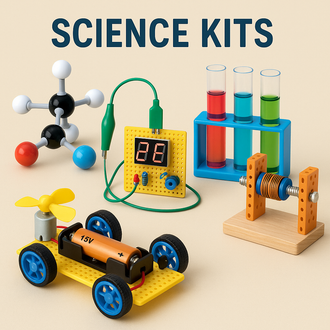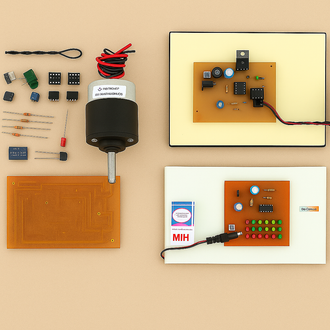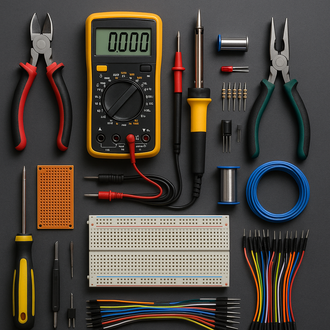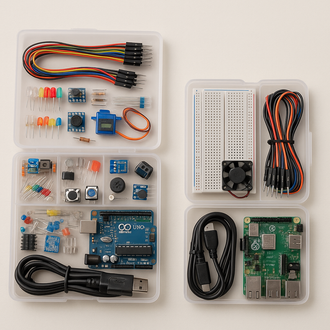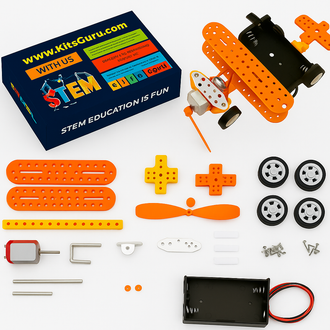
What is a solenoid used for | solenoid lock, Solenoid switch, Solenoid valve
- 05 Oct, 2025
A solenoid is an electromechanical device that converts electrical energy into linear motion. Compact yet powerful, solenoids are used in automation, robotics, industrial machinery, home appliances, and even automobiles. Their ability to deliver precise, fast, and repeatable motion makes them an essential part of modern technology. This blog explores what a solenoid is, how it works, and its major applications — focusing on the solenoid lock, solenoid switch, and solenoid valve, along with several other real-world uses.
Understanding How a Solenoid Works
A solenoid typically consists of a tightly wound copper coil, a ferromagnetic core (plunger), and a housing. When electric current passes through the coil, it generates a magnetic field that attracts or repels the core. This motion is harnessed to open or close mechanical components, control flow, or activate switches. Solenoids are highly efficient because they can generate substantial mechanical force from a small electrical signal.
Applications of Solenoids
Solenoids are versatile devices used anywhere controlled motion or automation is required. Below are their major types and applications.
1. Solenoid Lock
A solenoid lock is widely used in electronic locking systems such as smart doors, vending machines, and access control panels. When electricity flows through the solenoid, the magnetic field retracts or releases the locking pin, enabling smooth locking and unlocking. These locks are reliable, energy-efficient, and provide fast response times, making them ideal for security and automation systems.
2. Solenoid Switch
A solenoid switch is used to control high-current circuits with low-power electrical signals. Commonly found in vehicles, these switches engage the starter motor when you turn the ignition key. They are also used in industrial machines to safely switch power between circuits without manual contact. Their quick action and reliability make them critical in control panels and relay systems.
3. Solenoid Valve
A solenoid valve is one of the most popular uses of solenoids. These valves control the flow of liquids or gases in systems like irrigation, air compressors, hydraulic machines, and water treatment plants. When energized, the solenoid moves a plunger that opens or closes a passage, allowing precise fluid control. Their durability, accuracy, and fast switching make them indispensable in process industries.
Extended Applications of Solenoids
4. Automotive Systems
In automobiles, solenoids play a vital role in ignition systems, automatic transmissions, fuel injectors, and anti-lock braking systems (ABS). For example, the starter solenoid engages the engine’s flywheel when the driver turns the key, while transmission solenoids regulate hydraulic fluid flow to shift gears smoothly. They are also used in car door locks and fuel cutoff systems for improved safety and automation.
5. Industrial Automation & Robotics
In factories and robotic systems, solenoids serve as compact actuators for controlling pneumatic valves, conveyor gates, pick-and-place systems, and material-handling mechanisms. Their precise motion and fast response allow automated equipment to operate with consistency and safety. Many robotic arms and production lines use solenoid-actuated mechanisms for gripping or linear actuation.
6. Home Appliances
Solenoids are present in various home and office appliances — from washing machines and dishwashers to vending machines and air conditioners. In a washing machine, the solenoid valve controls water inflow and outflow, while in coffee machines, it regulates steam and pressure. These simple yet efficient devices ensure reliable performance and energy efficiency.
7. Medical and Laboratory Equipment
Solenoids are integral to medical devices like ventilators, analytical instruments, and infusion pumps. They control airflow, liquid dispensing, and sample movements with extreme precision. In laboratory automation, solenoids enable precise dosing, microfluidic control, and reagent mixing, supporting accurate scientific experimentation.
8. 3D Printers and CNC Machines
Solenoids are used to trigger nozzles, control safety interlocks, or manage print head positioning in 3D printers. In CNC machines, they engage or disengage clamps and safety stops. Their ability to deliver consistent mechanical force in tight spaces makes them perfect for high-precision applications.
9. Energy and HVAC Systems
In HVAC systems and renewable energy setups, solenoids manage the operation of air valves, fuel delivery, and refrigerant flow. They are also used in solar water heaters and electric control panels to regulate heat and energy distribution.
Advantages of Using Solenoids
- Compact design and quick response
- Reliable and low-maintenance operation
- Precise linear or rotary motion control
- Low power consumption with high mechanical efficiency
- Easy integration into automation systems
How to Choose the Right Solenoid
When selecting a solenoid for your project, consider voltage rating, stroke length, force requirement, duty cycle, and environment. For instance, a DC solenoid may suit battery-powered devices, while an AC type works better for industrial applications. KitsGuru offers a wide range of solenoids and electromagnets suitable for DIY, educational, and industrial purposes.
Conclusion
Solenoids have become indispensable in today’s technology-driven world, enabling everything from simple door locks to complex automation systems. Whether it’s a solenoid lock securing access, a solenoid switch powering heavy machinery, or a solenoid valve regulating flow, these components bring precision, safety, and reliability to countless applications. Explore the full range of solenoids and electromagnets at KitsGuru to power your next project or innovation.


